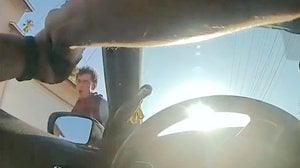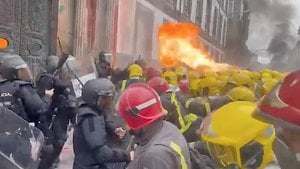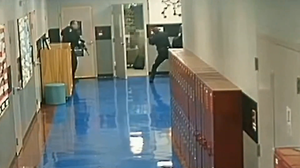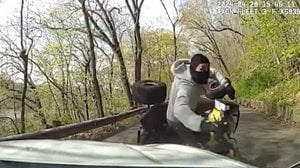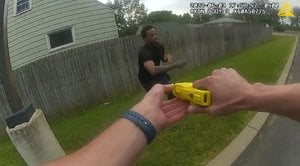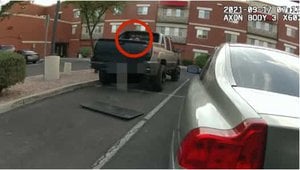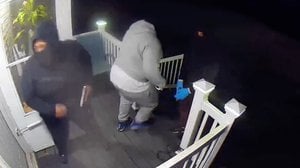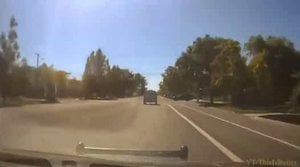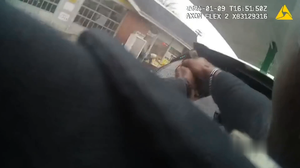
(NSFW) DC Park Police Officer Involved Shooting Inside Suspect Vehicle
Published 1 years ago
This footage contains the first body-worn camera video to be released by a Federal Agency regarding an OIS. To set the stage, these officers, both of the Park Police and DC Metro, are responding to a stolen vehicle. This refers to a white crossover SUV with plates belonging to another vehicle and plastic-wrap over previously broken windows. The officers have reason to believe the suspect, sleeping in the driver's seat, is armed, although they have not been able to verify. While I have omitted approximately 10 minutes of waiting for backup and officers discussing non sequitur and unrelated cases/incidents, I have included as much of the planning stage as possible. As different officers arrive with different levels of experience and insight, the plan evolves from blocking the car in and smashing the driver's side window in order to yank the suspect out to simply cutting away the plastic wrap to gain a more stealthy advantage. We turn to Scottish poet Robert Burns for a spoiler: "The best laid schemes o' mice an' men gang aft agley."
An officer begins cutting into the plastic wrap on the rear passenger window at 09:04. At 09:26, he reaches inside the slit he cut to unlock the door. He pops the door at 09:58, briefly pausing to see if the suspect wakes. Opening the door at 10:24, the officer deploys his baton at 10:51 in order to unlock the driver's rear door. At 11:26, another officer reaches in to unlock the driver's door, and the officer wearing this bodycam enters through the passenger rear. The officers immediately announce themselves as police, and warn the suspect not to move. During the struggle, at 11:36 an officer warns "get out, get out, get out," as the suspect puts the car in drive. While the other officers successfully exfil, the bodycam officer remains inside. He has been pulled to the driver's rear seat. The suspect has begun to flee the scene in the vehicle, despite earlier planning having involved an officer blocking the forward escape route.
At 11:44, the officer warns the suspect to stop the vehicle. The officer moves to a position of advantage from the rear passengers side, admonishing the driver to "stop, man, just let me out," at 11:47. At 11:50, this escalates to "stop or I'll shoot," as the officer raises his weapon. At 11:51, the officer fires 5 rounds into the suspect's back. At 11:54, the suspect loses control of the vehicle, which veers off the road and into a house on the right.
The officer exits the vehicle via the passenger rear door at 11:58, while calling in "shots fired" via radio. Backup is seen arriving from the left as the officer calls for EMS at 12:22. At 12:39, a backup officer puts the vehicle in Park, but the vehicle revs as the suspect's foot is on the accelerator. At 12:53, an officer confirms that everyone is out of the house. Simultaneously, the vehicle is shut off. At 13:02, an officer confirms that the suspect has a gunshot wound in the stomach, but is likely unaware of the other rounds that had been fired though the back of the driver's seat. Both the bodycam officer and another officer announce that they received head injuries during the incident. At 13:29, the officers confirm that the suspect is breathing and request a medical kit from one of the patrol cars. Officers extricate the suspect via the passenger side door of the vehicle at 15:29.
Patient assessment begins at 15:41. At 16:06, the officers begin applying seals to the gunshot wounds. at 16:36, it is advised that air evac is en route. Most of the injuries and medical intervention have been blurred out by the issuing agency, although a sergeant begins doing chest compressions at 17:59. EMS arrives at 18:54. At 19:49, the bodycam officer takes over compressions. In both instances, the compressions are a little fast, but this is unsurprising given the adrenaline and stress of the situation. At 20:18, compressions stop while a medical report is given to responding EMS. EMS takes over care and compressions at 02:32. At 02:43 the officer giving the report states that the suspect was "unresponsive before getting shot." However, this doesn't address the difference between "asleep" and "unresponsive" from a medical point of view, nor the ensuing fight or travel before the gunfire. Video terminates as the medivac helicopter arrives. The suspect died of his wounds and a handgun was found in the vehicle.
About the Author

Cole Simms
Cole Simms is an Air Guardsman, NASA enthusiast, police officer, and security contractor with particular experience in austere environments. Outside of work, he volunteers as a Stop The Bleed instructor for area schools. He holds a Bachelor's Degree in Homeland Security and Emergency Management, and blends his knowledge and experience to write analysis for Funker530.





